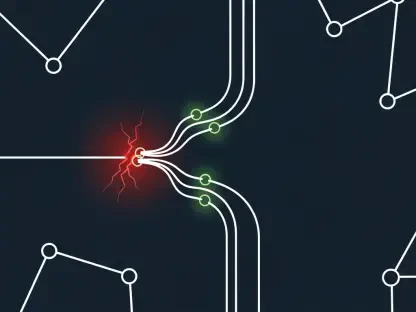In the rapidly evolving world of telecommunications, Vladislav Zaimov stands out as an expert with a deep understanding of both network architecture and the complexities of risk management in a vulnerable landscape. As companies like Dell Technologies pave the way for telecom transformation at events like the Mobile World Congress, it’s crucial to delve into what makes their approach unique and impactful. Vladislav shares his insights on how Dell’s initiatives and technologies are designed to support communications service providers (CSPs) in embracing a more open, cloud-native network ecosystem.
What is Dell Technologies’ main focus at Mobile World Congress with respect to telecom transformation?
Dell Technologies is emphasizing the transformation of telecom networks into a more open, disaggregated cloud-native architecture, with a particular focus on starting this journey from the core network. Their goal is to enable CSPs to shift towards a horizontal cloud model that can seamlessly integrate various technologies without being tied down to a specific vendor.
Can you explain the Open Telecom Transformation Program that Dell Technologies announced?
This program is a comprehensive initiative that aims to assist CSPs in adopting a cloud-native approach with advisory, implementation, and managed services. It’s particularly designed to ensure that CSPs can transform their networks without locking themselves into a single vendor, offering flexibility and choice at every step.
Why is the core network considered the starting point for network transformation, according to Dell Technologies?
The core network serves as the foundation for overall network transformation because it’s crucial for supporting cloud-native 5G core and AI workloads. Dell’s Telecom Infrastructure Blocks provide a streamlined path for CSPs to begin this transformation, offering pre-engineered and validated systems that facilitate fast deployment.
What role does the container-as-a-service (CaaS) layer play in Dell’s solution?
The CaaS layer in Dell’s solution allows operators flexibility in choosing their preferred container management system while Dell’s Infrastructure Automation Suite delivers automated lifecycle management. This combination ensures that workload deployments are efficient, scalable, and maintain high performance standards.
Tell us about the Dell PowerEdge XR8000. Why is it particularly suited for telecom environments?
The XR8000 is a robust, high-density server with a modular design catered to telecom environments. It provides unparalleled scalability and versatility, capable of supporting various workloads from the edge to the core. Its short-depth and ruggedized features make it ideal for deployment across diverse locations.
What is the purpose of Dell’s Open Telecom Ecosystem Labs (OTELs)?
OTELs function as a collaborative space where Dell and its partners can validate full-stack solutions for performance and interoperability. This setup not only ensures compatibility but also certifies a range of partner workloads to seamlessly operate on systems like the XR8000.
How does Dell’s ecosystem-first approach benefit CSPs on their journey to openness and disaggregation?
Dell’s ecosystem-first strategy supports CSPs by offering a framework where different technologies and partners can integrate effectively. This openness fosters faster innovation, reduces risk, and allows CSPs to adopt cutting-edge technologies confidently.
In what ways does Dell ensure a risk-free transformation for CSPs into an open and horizontal telco cloud?
Dell provides a structured approach through its modular hardware, validated software stacks, and automation tools, ensuring that CSPs can undergo transformation without sacrificing the reliability or performance of their services. This risk-managed framework helps CSPs transition smoothly towards an open and horizontal telco cloud.
Why is the modular approach significant in Dell’s strategy for telecom transformation?
Modularity in Dell’s strategy allows CSPs to build networks that are adaptable to future technological advances and consumer demands. It provides the flexibility required to scale, adapt, and innovate without being constrained by existing infrastructure.
How does Dell Technologies’ offering align with the evolving needs of networks for next-gen services and AI-native capabilities?
Dell’s offerings, such as their Cloud Core solutions, are tailored to meet the demands of next-gen services and AI, providing the necessary infrastructure and tools for CSPs to support and innovate in areas like AI-powered analytics and 5G.
Do you have any advice for our readers?
Stay informed and flexible as the telecom landscape evolves. Embrace modular and ecosystem-driven approaches, as these offer the adaptability required to meet future requirements and technological shifts. Consider partnerships and technological solutions that prioritize openness and innovation.









